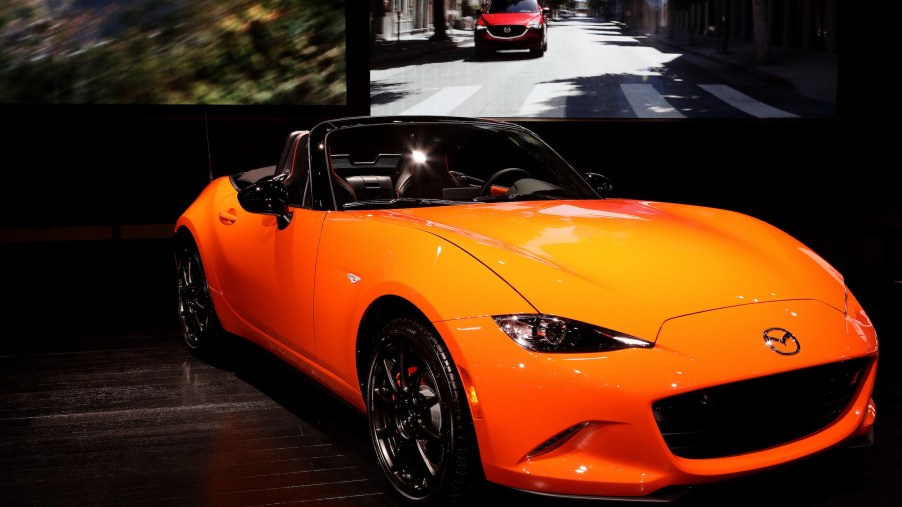
Mazda Uses a Special Design Philosophy for All of Its Cars
With so many vehicles on the market today, it’s a real challenge for an automaker to produce cars that stand out from the crowd. Mazda has taken “standing out” to a whole new creative level. For Mazda, the ultimate form of beauty is design crafted by human hands.
Mazda designers and modelers alike find artistic new forms for their vehicles by exploring how emotion-driven forms move the hearts of people. What is Mazda’s design philosophy? How does it give the company an edge in a competitive market?
Mazda’s KODO design
The automaker calls its design philosophy KODO which means “soul of motion.” It was first introduced in 2010, brought to the automaker by Ikuo Maeda. Maeda serves as executive officer and general manager of Mazda’s design division.
The first Mazda to feature KODO was the Mazda CX-5. Since that time, all Mazda offerings have reflected the design philosophy. Even affordable Mazda vehicles have been elevated by the artistic and innovative approach.
Maeda explains that “seeing the beauty of instantaneous motion in a living creature” can evoke powerful emotion. Once the emotion has captured the designer, they rely on their experienced aesthetic sensibilities to recreate it in a fully-realized physical form that’s pure and beautiful.
Japanese craftsmen inject life into their creations, Maeda further explained, receiving the essential force of a soul along with care and a creator’s love. As a Japanese automaker, Maeda believes that each of their designs made painstakingly and sincerely by human hands receives a soul.
Breathing life into the car
Mazda believes a vehicle is more than a means of getting from point A to point B. It views them as reliable partners and sources of inspiration. A car that can express life beyond its own form and shape can capture the imagination of all who view it.
Maeda consistently tells everyone in Mazda’s Design Division to have a “brand-led design perspective.” The designer’s role isn’t merely to optimize the appeal of each of the brand’s models. The designer’s job is to ensure that when all Mazda’s offerings are lined up together, they fascinate and capture the customers who view them.
The idea is to craft designs that allow the entire Mazda lineup to present a unique and uniform message. Mazda’s design process doesn’t begin with designing the car. First, the designers create what they call an ideal form. Using a process they call Exploratory Preparation, designers and modelers find the emotion and use it to create ideal forms to convey that message.
The form is used to assign the role of each model in Mazda’s lineup, Maeda explains. The roles are then discussed with the chief designers of each model. Those conversations are the designers’ inspiration to visualize the final big picture.
A philosophy that works for Mazda
By focusing on aesthetics and dynamic, emotion-driven design, Mazda not only boosts its vehicles but its brand identity too. It avoids cliches, trends, and traditional designs to offer customers something truly unique and beautiful.
Today, Mazda designers are able to fully realize their ideas to create truly cool car designs. The collective team is able to view the design and everyone’s excitement is shared. When one or more team members announce that a proposed design is a car they personally want, everyone pulls together to reach that goal.
For models that have come along since the CX-5, Maeda says the MX-5 Miata comes the closest to achieving what he considers to be ultimate purity. Instead of relying on character lines to express a sense of motion, he explains that a reflection of light was used instead.
With the CX-3, designers avoided more complex curves and opted instead for a single, flowing line for dynamic appeal.
Both designs for Maeda embody the concept of KODO design. Both vehicles sell very well for Mazda.
He explains that the creative team at Mazda is ready for the many challenges ahead in the pursuit of expressions that accurately reflect Japanese aesthetic sensibilities. Mazda is more than ready to compete against global competitors.


